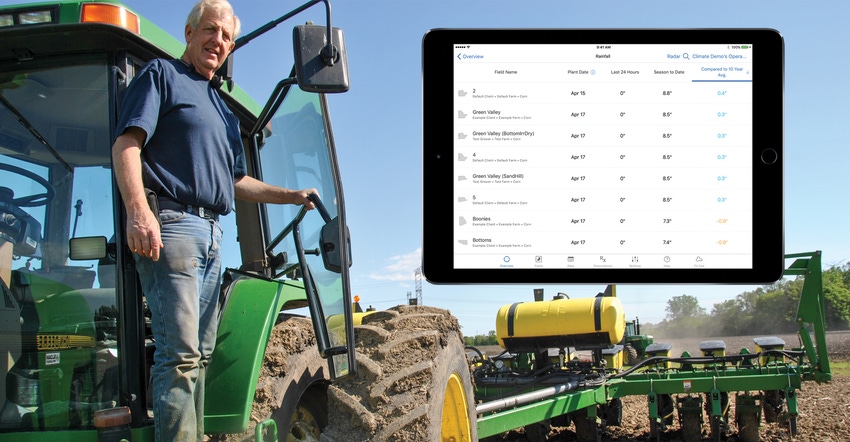
Not long ago, before electronic trading took over, Chicago grain traders would tell reporters standing near the trading pits that “rain makes grain” to explain why crop prices fell following a wet forecast by WGN’s Tom Skilling.
While their explanation was true, it didn’t tell anyone how much grain would be made, because no one really knew. But what if we did know how much grain the rain actually made? Would you pay for a weather system that could tell you that?
The technology to do that is not here yet, but it is getting close. Weather forecasting has advanced to where rainfall amounts can be tracked within specific areas of a single field. From there, crop programs calculate yields based on rainfall, heat conditions, fertilizer amounts and other data.
So much would you pay for that information?
While some rainfall, temperature and wind data is free and retrievable on smartphones and tablets, others cost money. To find free services, do a Google search for “weather apps” and a number of them show up.
Jerry Henningfeld can look at the glass rain gauge outside his kitchen window to know how much it rained on his northern Illinois farm. But when he wants to know how much it rained on the fields he farms miles away, he taps weather apps on his iPad and gets a reading on rain amounts, temperatures, wind direction and wind speed.
That weather service is free and saves time in not having to visually inspect fields. But for the $900 a year that Henningfeld pays, the service incorporates that weather data into broader farming metrics, such as determining when and where to apply nitrogen. It also aids in developing a yield and rainfall correlation that will help when hedging sales and planning future crops.
“What caught my attention was the wide range of field coverages and where the rain fell,” Henningfeld says of his Climate FieldView system. “There were times when it was raining at home but not where we were planting.”
Henningfeld doesn’t have irrigated fields, but for farmers who do, knowing when and where it will rain can save money on water use.
“That is real money to fire up a pivot or drip irrigation,” says Kip Pendleton, president of Pendleton Group, which helps farmers develop precision agriculture programs. “Knowing when to do that or not do that can provide a huge payback considering what they are paying for that weather information.”
Like other precision agriculture systems, farmers have a number of options in selecting a weather provider that supplies data easily retrieved on smartphones and tablets.
Besides The Climate Corporation, technology giant IBM offers The Weather Company. And Iteris has ClearAg, which has applied the weather skills it developed for transportation to farming. Agrible has various products, including its Pocket Rain Gauge.
Rain info rules
Electronic rain gauges are offered that provide rain amounts, soil temperatures and wind data in particular fields. Still, “rainfall is probably hands down the most critical weather element there is for farmers, so we have invested a great deal in our rainfall information system,” says Brad Colman, who leads Climate’s Weather Science unit. “From our own field research trials, we know that across a 250-acre field, the average variation in rainfall is about 7%. We have had cases where we had variations of 30%, where it showered across one part of the field and not the other.”
If it rained on a member’s field, The Climate Corporation will send that farmer an email each morning detailing rainfall location and amount. Henningfeld said the rainfall accuracy has improved in the three years he has had the system.
Weather data is a key to precision ag programs. When making crop plans and hedging decisions, knowing the history of rainfall on a particular field going back one to five years is helpful.
“These electronic field records are stamped with a GPS location to show where it rained in the field, but also include a time-date stamp with a weather application,” says Pendleton.
The Climate Corporation says the demand for weather data should increase, as providers incorporate more and better information into precision farming applications.
“An area where Climate is focusing on is unraveling the complicated linkages between weather events and crop yield,” says Colman. “I would hope that in addition to being fully informed on past, current and forecasted weather, the farmer will have a much clearer indication of how the season is unfolding.”
About the Author(s)
You May Also Like




